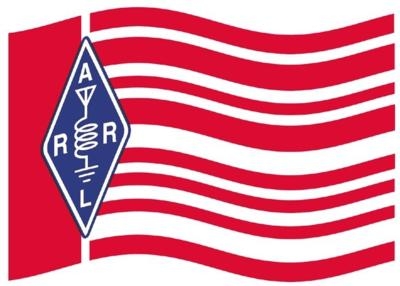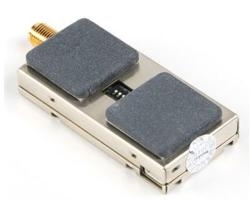American Radio Relay League Files Complaint With The FCC
In what it calls an “extremely urgent complaint” to the FCC, The American Radio Relay League ARRL has targeted the interference potential of a series of audio/video transmitters used on unmanned aircraft and marketed as Amateur Radio equipment. In a January 10 letter to the FCC Spectrum Enforcement Division, ARRL General Counsel Chris Imlay, W3KD, said the transmitters use frequencies intended for navigational aids, air traffic control radar, air route surveillance radars, and global positioning systems.

“This is, in ARRL’s view, a potentially very serious interference problem, and it is respectfully requested that the products referenced…be investigated and removed from the marketplace immediately and that the importers be subjected to normal sanctions,” ARRL’s letter said. Some of the transmitters operate on frequencies between 1,010 and 1,280 MHz. “These video transmitters are being marketed ostensibly as Amateur Radio equipment,” the League said, “but of the listed frequencies on which the devices operate, only one, 1280 MHz, would be within the Amateur Radio allocation at 1240-1300 MHz.” Even then, ARRL said, operation there would conflict with a channel used for radio location.
ARRL said the use of 1,040 and 1,080 MHz, which would directly conflict with air traffic control transponder frequencies, represented the greatest threat to the safety of flight. The use of 1,010 MHz, employed for aeronautical guidance, could also be problematic.
ARRL cited the Lawmate transmitter (pictured) and companion 6 W amplifier as examples of problematic devices being marketed in the US. Each costs less than $100 via the Internet. The device carries no FCC identification number.

“[T]he target market for these devices is the drone hobbyist, not licensed radio amateurs. The device, due to the channel configuration, has no valid Amateur Radio application,” ARRL told the FCC. “While these transmitters are marked as appropriate for amateur use, they cannot be used legally for Amateur Radio communications.” In the hands of unlicensed individuals, the transmitters could also cause interference to Amateur Radio communication in the 1.2 GHz band, ARRL contended.
The League said it’s obvious that the devices at issue lack proper FCC equipment authorization under FCC Part 15 rules, which require such low-power intentional radiators to be certified.
“Of most concern is the capability of the devices to cripple the operation of the [air traffic control] secondary target/transponder systems,” ARRL said. “These illegal transmitters represent a significant hazard to public safety in general and the safety of flight specifically.”
The surge in sales of drones has been dramatic. The FAA has predicted that combined commercial and hobby sales will increase from 2.5 million in 2016 to 7 million by 2020.
In Exhibit A of the January 10 letter, “Illegal Drones Threaten Public Safety,” the League noted that some of the drones and associated equipment it has come across “are blatantly illegal at multiple levels,” with some drone TV transmitters described as “particularly alarming.”
“Rated at six times over the legal power limit, and on critical air navigation transponder frequencies, these devices represent a real and dangerous threat to the safety of flight, especially when operated from a drone platform that can be hundreds of feet in the air,” the exhibit narrative asserted.
(Source: ARRL news release)
 ANN's Daily Aero-Term (04.26.24): DETRESFA (Distress Phrase)
ANN's Daily Aero-Term (04.26.24): DETRESFA (Distress Phrase) ANN's Daily Aero-Linx (04.26.24)
ANN's Daily Aero-Linx (04.26.24) Airborne 04.22.24: Rotor X Worsens, Airport Fees 4 FNB?, USMC Drone Pilot
Airborne 04.22.24: Rotor X Worsens, Airport Fees 4 FNB?, USMC Drone Pilot Airborne 04.24.24: INTEGRAL E, Elixir USA, M700 RVSM
Airborne 04.24.24: INTEGRAL E, Elixir USA, M700 RVSM Airborne-NextGen 04.23.24: UAVOS UVH 170, magni650 Engine, World eVTOL Directory
Airborne-NextGen 04.23.24: UAVOS UVH 170, magni650 Engine, World eVTOL Directory




